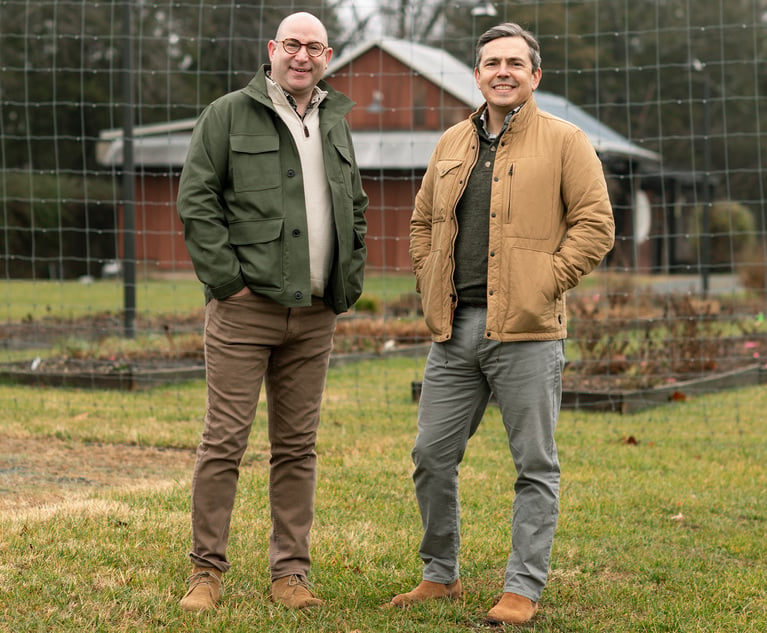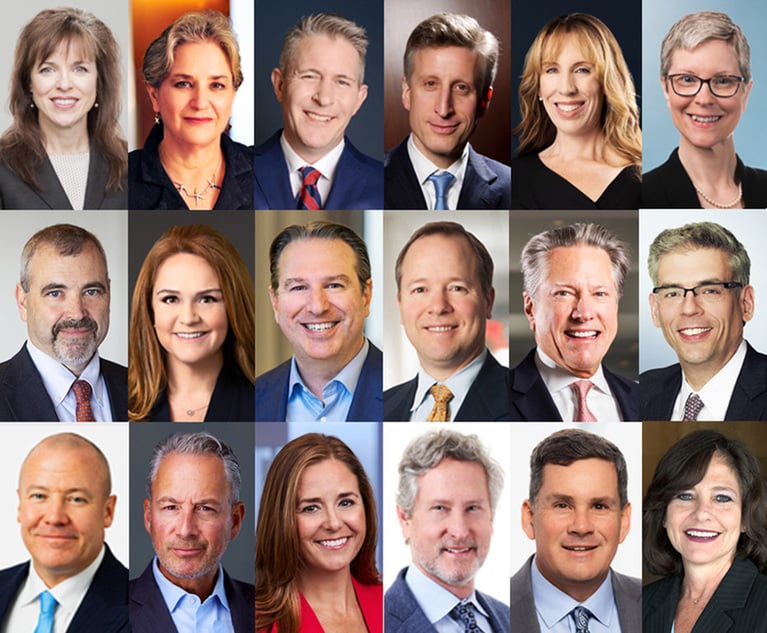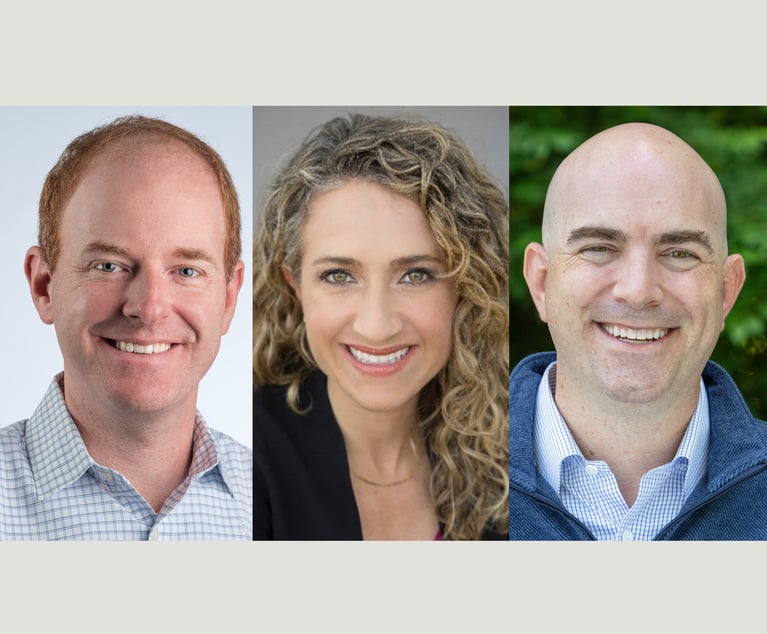 Award Trophy
Award TrophyEverything You Wanted to Know About Litigation Dept. of the Year (But Were Afraid to Ask)
Congratulations to all of the finalists. Your submissions, presentations and, more importantly, the work that you do, are all exceptional.
November 21, 2019 at 01:18 AM
4 minute read
If you are reading this and you had something to do with your law firm's submission for The Litigation Departments of the Year, thank you! If you are reading this and you weren't involved in the submission, go give a big hug to the people in your organization who were.
Our editorial staff has learned so much about the firms, the matters, the initiatives and the individuals who are elevating the profession in new and inspiring ways. Regardless of who wins, we will be telling the stories we learned from the submissions, calling the new sources we identified during our judging and following the trends that we found throughout the entries.
We are doing things a bit differently this year, too. For the first time, we announced in advance our finalists for the Litigation Departments of the Year contest, which we hold every other year. The winner will be announced at our awards gala Dec. 4 in New York. All of the finalists (Cravath, Swaine & Moore; Gibson, Dunn & Crutcher; O'Melveny & Myers; Paul, Weiss, Rifkind, Wharton & Garrison; Quinn Emanuel Urquhart & Sullivan; and Sidley Austin) will be profiled in our January edition, as will a list of those firms that were really close to making the cut.
One tradition that has remained the same throughout the contest's history is the interview process. We invite a group of litigators from each of the finalist firms to come to our New York offices and meet with our judging team. These conversations are illuminating and give us a deeper sense of the departments, well beyond what any case description could do.
I can say that all six of our finalist firms elevated their standing after the interview process. These are immensely helpful to our team and we are always impressed. And on top of that, despite all having different cultures and business models, the similarities were surprising. All that is to say, picking the winner was a challenge!
When asked about their philosophies as a department, every firm said they want to be the go-to shop for clients to come to with their most complex, high-stakes matters. And they all said they are the rare firm that actually tries cases, rather than just settling disputes. Some touted international work, some focused on their prowess despite maintaining a smaller litigation department, and some focused on the number of cases they handled. They all talked about pro bono (we do require it).
What struck me most was the frequency with which these firms and others work together on some of the highest-profile matters. In this cycle, the AT&T-Time Warner antitrust battle was the biggest example of a powerhouse virtual firm coming together. Four of our six finalists were on that matter, and they all cited each other's work and the team approach to handling such a blockbuster case. And it wasn't just those four firms or that case that demonstrated the way our finalists are repeatedly brought together to handle the world's biggest disputes. (Have I mentioned it's tough to pick a winner? Clients can shed a lot of light in situations like these.)
During these interviews, we get to see the interaction between partners and hear the behind-the-scenes stories of some of the biggest litigation crises corporate America faced in the past two years. We learn about new types of disputes, new battles being waged in or out of court, and new asks from clients who are looking to better manage their litigation portfolios. Litigators at their core, these interviews were their trial and we were their jury. We got a show and enjoyed every minute, learning more about the people, the cases and the firms.
Congratulations to all of the finalists. Your submissions, presentations and, more importantly, the work that you do, are all exceptional.
Gina Passarella Cipriani is editor-in-chief of The American Lawyer.
This content has been archived. It is available through our partners, LexisNexis® and Bloomberg Law.
To view this content, please continue to their sites.
Not a Lexis Subscriber?
Subscribe Now
Not a Bloomberg Law Subscriber?
Subscribe Now
NOT FOR REPRINT
© 2025 ALM Global, LLC, All Rights Reserved. Request academic re-use from www.copyright.com. All other uses, submit a request to [email protected]. For more information visit Asset & Logo Licensing.
You Might Like
View All
Litigation Leaders: Greenspoon Marder’s Beth-Ann Krimsky on What Makes Her Team ‘Prepared, Compassionate and Wicked Smart’

Why the Founders of IP Boutique Fisch Sigler Are Stepping Away From the Law and Starting an AI Venture
Trending Stories
Who Got The Work
Michael G. Bongiorno, Andrew Scott Dulberg and Elizabeth E. Driscoll from Wilmer Cutler Pickering Hale and Dorr have stepped in to represent Symbotic Inc., an A.I.-enabled technology platform that focuses on increasing supply chain efficiency, and other defendants in a pending shareholder derivative lawsuit. The case, filed Oct. 2 in Massachusetts District Court by the Brown Law Firm on behalf of Stephen Austen, accuses certain officers and directors of misleading investors in regard to Symbotic's potential for margin growth by failing to disclose that the company was not equipped to timely deploy its systems or manage expenses through project delays. The case, assigned to U.S. District Judge Nathaniel M. Gorton, is 1:24-cv-12522, Austen v. Cohen et al.
Who Got The Work
Edmund Polubinski and Marie Killmond of Davis Polk & Wardwell have entered appearances for data platform software development company MongoDB and other defendants in a pending shareholder derivative lawsuit. The action, filed Oct. 7 in New York Southern District Court by the Brown Law Firm, accuses the company's directors and/or officers of falsely expressing confidence in the company’s restructuring of its sales incentive plan and downplaying the severity of decreases in its upfront commitments. The case is 1:24-cv-07594, Roy v. Ittycheria et al.
Who Got The Work
Amy O. Bruchs and Kurt F. Ellison of Michael Best & Friedrich have entered appearances for Epic Systems Corp. in a pending employment discrimination lawsuit. The suit was filed Sept. 7 in Wisconsin Western District Court by Levine Eisberner LLC and Siri & Glimstad on behalf of a project manager who claims that he was wrongfully terminated after applying for a religious exemption to the defendant's COVID-19 vaccine mandate. The case, assigned to U.S. Magistrate Judge Anita Marie Boor, is 3:24-cv-00630, Secker, Nathan v. Epic Systems Corporation.
Who Got The Work
David X. Sullivan, Thomas J. Finn and Gregory A. Hall from McCarter & English have entered appearances for Sunrun Installation Services in a pending civil rights lawsuit. The complaint was filed Sept. 4 in Connecticut District Court by attorney Robert M. Berke on behalf of former employee George Edward Steins, who was arrested and charged with employing an unregistered home improvement salesperson. The complaint alleges that had Sunrun informed the Connecticut Department of Consumer Protection that the plaintiff's employment had ended in 2017 and that he no longer held Sunrun's home improvement contractor license, he would not have been hit with charges, which were dismissed in May 2024. The case, assigned to U.S. District Judge Jeffrey A. Meyer, is 3:24-cv-01423, Steins v. Sunrun, Inc. et al.
Who Got The Work
Greenberg Traurig shareholder Joshua L. Raskin has entered an appearance for boohoo.com UK Ltd. in a pending patent infringement lawsuit. The suit, filed Sept. 3 in Texas Eastern District Court by Rozier Hardt McDonough on behalf of Alto Dynamics, asserts five patents related to an online shopping platform. The case, assigned to U.S. District Judge Rodney Gilstrap, is 2:24-cv-00719, Alto Dynamics, LLC v. boohoo.com UK Limited.
Featured Firms
Law Offices of Gary Martin Hays & Associates, P.C.
(470) 294-1674
Law Offices of Mark E. Salomone
(857) 444-6468
Smith & Hassler
(713) 739-1250








